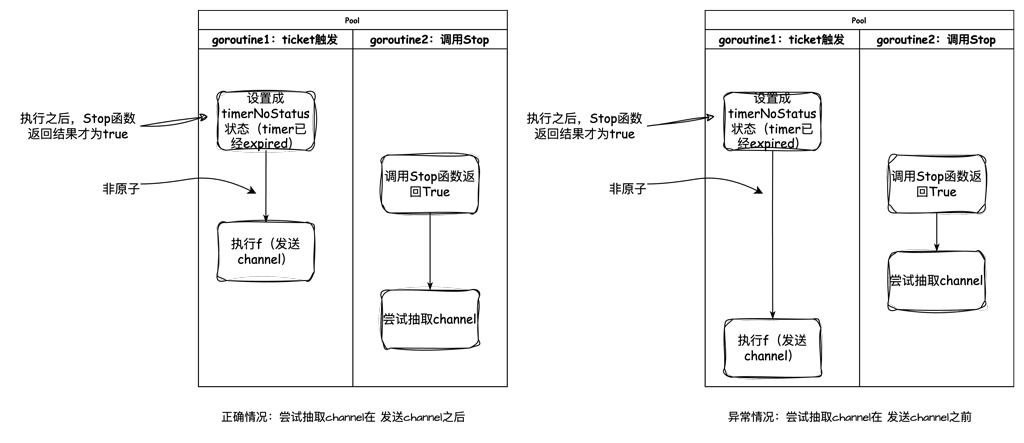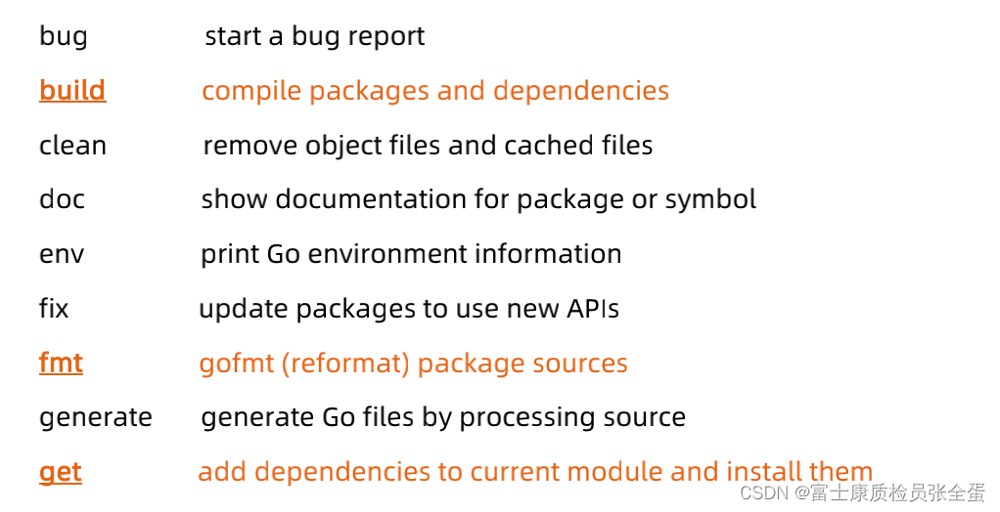一句话总结:保存和复用临时对象,减少内存分配,降低GC压力
sync.Pool是可伸缩的,也是并发安全的,其大小仅受限于内存大小。sync.Pool用于存储那些被分配了但是没有使用,而未来可能会使用的值。这样就可以不用再次经过内存分配,可直接复用已有对象,减轻GC的压力,从而提升系统性能。
使用方法
声明对象池
|
1 2 3 4 5 6 7 8 9 10 11 12 |
type Student struct { Name string Age int32 Remark [1024]byte } func main() { var studentPool = sync.Pool{ New: func() interface{} { return new(Student) }, } } |
Get & Put
|
1 2 3 4 5 6 7 8 9 10 11 12 13 14 15 16 17 18 19 |
type Student struct { Name string Age int32 Remark [1024]byte } var buf, _ = json.Marshal(Student{Name: "lxy", Age: 18}) func Unmarsh() { var studentPool = sync.Pool{ New: func() interface{} { return new(Student) }, } stu := studentPool.Get().(*Student) err := json.Unmarshal(buf, stu) if err != nil { return } studentPool.Put(stu) } |
- Get()用于从对象池中获取对象,因为返回值是interface{},因此需要类型转换
- Put()则是在对象使用完毕之后,返回对象池
性能测试
以下是性能测试的代码:
|
1 2 3 4 5 6 7 8 9 10 11 12 13 14 15 16 17 18 19 20 21 22 23 24 25 26 27 28 29 30 |
package benchmem import ( "encoding/json" "sync" "testing" ) type Student struct { Name string Age int32 Remark [1024]byte } var buf, _ = json.Marshal(Student{Name: "lxy", Age: 18}) var studentPool = sync.Pool{ New: func() interface{} { return new(Student) }, } func BenchmarkUnmarshal(b *testing.B) { for n := 0; n < b.N; n++ { stu := &Student{} json.Unmarshal(buf, stu) } } func BenchmarkUnmarshalWithPool(b *testing.B) { for n := 0; n < b.N; n++ { stu := studentPool.Get().(*Student) json.Unmarshal(buf, stu) studentPool.Put(stu) } } |
输入以下命令:
go test -bench . -benchmem
以下是性能测试的结果:
goos: windows
goarch: amd64
pkg: ginTest
cpu: 11th Gen Intel(R) Core(TM) i5-1135G7 @ 2.40GHz
BenchmarkUnmarshal-8 17004 74103 ns/op 1392 B/op 8 allocs/op
BenchmarkUnmarshalWithPool-8 17001 71173 ns/op 240 B/op 7 allocs/op
PASS
ok ginTest 3.923s
在这个例子中,因为 Student 结构体内存占用较小,内存分配几乎不耗时间。而标准库 json 反序列化时利用了反射,效率是比较低的,占据了大部分时间,因此两种方式最终的执行时间几乎没什么变化。但是内存占用差了一个数量级,使用了 sync.Pool 后,内存占用仅为未使用的 240/1392 = 1/6,对 GC 的影响就很大了。
我们甚至在fmt.Printf的源码里面也使用了sync.Pool进行性能优化!


